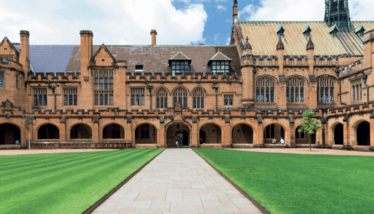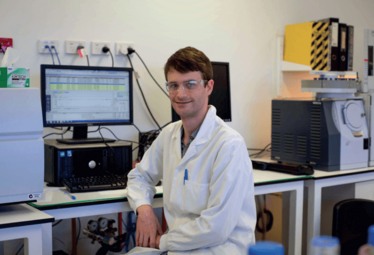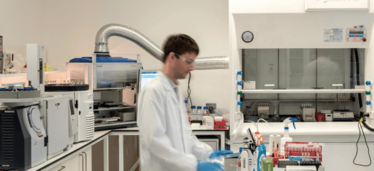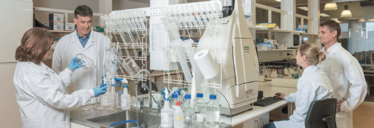
Deep Research Down Under
Iain McGregor, Director of The Lambert Initiative for Cannabinoid Therapeutics, University of Sydney, Australia, shares his research, opinions, and vision.
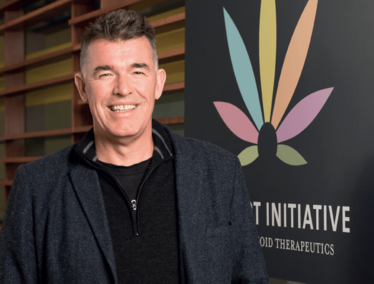
What sparked your interest in cannabis research?
To answer that, I’d have to rewind all the way back to my youth, when Edinburgh was flooded with hashish from Afghanistan and Pakistan. As a musician I saw a lot of drug-taking – and I was curious as to how a drug like cannabis could affect behavior. I was lucky enough to gain entry to an undergraduate degree in experimental psychology at the University of Oxford, where I focused my studies on the brain and its circuits.
At that point, thinking back to my earlier fascination with how drugs affect behavior, I became interested in the pharmacology and neural effects of drugs like cannabis. After graduating in 1983, I spent three years in the music industry playing in a succession of dodgy bands – none of which I am prepared to name! My music career wasn’t taking off and Thatcher’s Britain was looking bleak, so when an opportunity came up to do a PhD in psychopharmacology at the University of Sydney, Australia, I jumped at the chance.
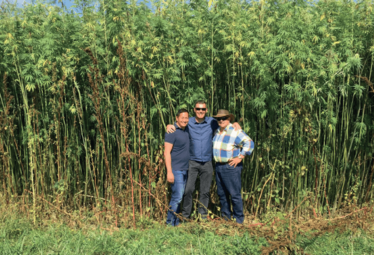
What were you working on back then?
The 1990s was an exciting decade for the cannabinoid research community, with the discovery of the cannabinoid receptors and the first endocannabinoid, but legal restrictions made it tough to access THC and other cannabinoids for research. My first publication on cannabinoids was in 1996, after we got hold of a little bit of a potent synthetic CB1 agonist called CP 55,940 from Pfizer. That allowed us to interrogate the CB1 receptor and do some of the first work looking at the behavioral effects of CB1 agonists in rats.
I then did some work on how THC differentially affects the adolescent brain. We also discovered the phenomenon of THC re-intoxication. THC is stored in fat and if that fat is then rapidly metabolized, the THC can be released back into the blood. We first showed the effect in rats, and later by getting people who were heavy cannabis users cycling furiously on exercise bikes!
That work became relevant later when I was asked to testify in court on behalf of people who have failed drug tests for THC. One example was an overweight man who had been using cannabis heavily but, on probation for another offense, decided to get his life in order and got a job as a builder’s laborer, only to repeatedly fail court-mandated drug tests. I gave evidence that the extremely physical work he was doing could have triggered the release of fat-stored THC from previous drug use into his system, and he was spared jail.
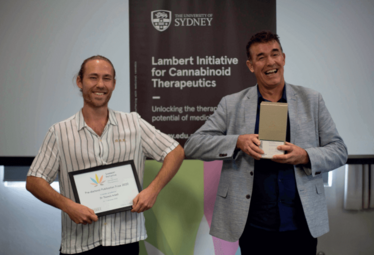
Iain McGregor and the Lambert Initiative’s latest PhD graduate, Tom Arkell
How easy is it to do research on cannabis in Australia now?
It’s recently become a lot easier. The government introduced a medicinal cannabis scheme for patients in 2016 and, as part of that legislation, cannabinoids have been rescheduled and have become easier to access for research. We still have to complete a mountain of paperwork, but it’s probably less troublesome than in the USA, where even CBD has been treated like plutonium when used in preclinical research. We also have a mature health system in Australia with good infrastructure for clinical trials – and we have been spared the worst ravages of COVID (fingers crossed).
Could you share some of the clinical trials you are doing at the Lambert Initiative?
We’re collaborating on a trial with Tourette’s syndrome patients up in Queensland and another for insomnia in Sydney that use a full-spectrum oil with THC and a range of terpenes. We are also about to embark on several high-dose CBD trials, particularly focusing on pain. Many people are using CBD products for pain, but there’s very little evidence in the human literature that it is effective. In particular, we have a large trial on pain in spinal cord injury patients about to start; we want to see whether CBD can ease neuropathic pain resulting from the injury.
We’re also running trials on CBD and alcohol detoxification and methamphetamine addiction and also seeing whether it increases exercise endurance and enjoyment. Like many scientists, we’re also very interested in looking beyond CBD and THC, and have human trials planned for some novel phytocannabinoids.
Meet (some of) the Lambert Team
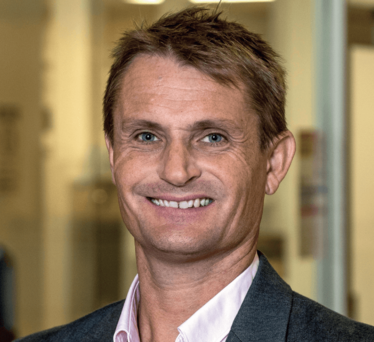
Jonathon Arnold, Associate Professor and Deputy Director
Why I pursue cannabis/ cannabinoid research...
I decided to pursue cannabinoid research 25 years ago because, at that time, huge discoveries were being made on the endogenous cannabinoid system. For a pharmacology major it was mind-blowing that a new lipid signaling system was identified in the brain and body, and that it was through this system that cannabis produced its mood-altering actions.
My first projects examined the behavioral pharmacology of THC, anandamide, and the synthetic cannabinoid CP 55,940 – a molecule that had been used to map cannabinoid receptors in the brain for the first time. I remember attending the International Cannabinoid Research Society meeting in 1997 and witnessing Nephi Stella present on the effects of 2-AG on neuronal plasticity – and having the late William Devane, discoverer of anandamide, crash in our room! These were exciting times to start a research career in cannabinoid science!
What I’m working on...
The Lambert family saw the great benefit that medicinal cannabis had on Katelyn Lambert – who suffers from Dravet syndrome – an intractable form of childhood epilepsy. From this personal experience, the Lamberts gave a huge gift to the University of Sydney to help advance cannabis science and unlock the medicinal potential of cannabis.
Over the last five years, we have been testing single molecule phytocannabinoids and full-spectrum extracts to tease out which cannabinoids or combination of cannabinoids have therapeutic effects in preclinical disease models. We have discovered several phytocannabinoids beyond CBD that possess anticonvulsant properties, with some that appear as potent or even more potent than CBD.
For example, several minor cannabinoids (CBC, CBCA, CBCVA, CBGVA and CBDVA) have been identified as anticonvulsants (1, 2); while the phytocannabinoid acids CBDA and CBGA reduced seizures at lower doses than CBD. We also found a cannabis extract that has anticonvulsant properties, which we are now deconvoluting further. Could there be a magic combination of molecules or could there be an anticonvulsant constituent we have not yet considered?
Where we’re heading...
I hope my research brings innovation to the field of medical cannabis and ultimately the very best cannabisbased medicines to patients. Our team brings together expertise in medicinal chemistry, analytical chemistry, in vitro and in vivo pharmacology, human psychopharmacology, and clinical trials. I hope to support this next generation of cannabis scientists to help bring about the next big discoveries in the field of cannabis science.
What's the story behind the Lambert Initiative? How did you get involved?
The story starts with Lucy Haslam, a former nurse and an important advocate for medicinal cannabis compassionate access in Australia. Her son was dying of cancer, wracked with pain, and had no appetite. Cannabis was one of the few things that helped him but back then there was no way to access the drug legally.
Lucy’s husband, a drug squad detective in a small country town, ended up buying weed on the black market. Lucy was outraged that they had to break the law to get help for their son, and set up an organization called United in Compassion to campaign for drug law reform. Where do I come in? In late 2014, Lucy set up a symposium about medical cannabis and I was invited to speak, along with my colleagues David Allsop and Nicholas Lintzeris. In my talk, I floated the idea of an Australian Center for the Study of Medicinal Cannabis. Afterwards, we were approached by Michael Lambert, whose daughter Katelyn suffers debilitating pediatric epilepsy and was being treated with (then illegal) CBD oil.
A couple of weeks later, we got a call out of the blue from Michael, who told me that he’d been discussing the idea of aresearch institute with his father, financier Barry Lambert, and asked if we would like some money for our center... Barry and Joy Lambert went on to pledge 33.7 million Australian dollars over 10 years to create the Lambert Initiative. All too often, scientists are locked into 6- or 12-month projects but, when it comes to drug discovery – or making a material difference in medical research – that’s simply not long enough. It’s a dream come true for any scientist to get an opportunity like this, particularly in such an exciting field. And we’re forever grateful to the Lambert family for making it possible.
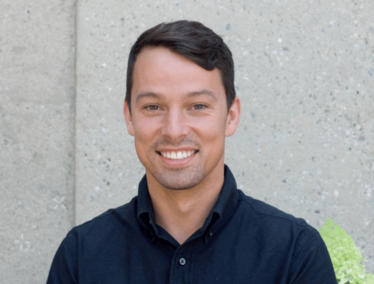
Samuel Banister, Team Leader in Medicinal Chemistry
Why I pursue cannabis/ cannabinoid research...
I’ve always been fascinated by nature as a master chemist. More than two-thirds of the medicines we use have some heritage in the chemical space of natural products. Medicinal chemistry allows us to rationally modify these natural molecules, atom by atom, to improve their ability to treat human diseases. Cannabis represents a treasure trove of interesting chemical matter for the discovery of new medicines – and most of it is unexplored!
What I’m working on...
Our lab is focused on the development of new cannabinoidbased t reatments for specif ic forms of epilepsy. We are investigating various chemical strategies for improving cannabidiol as a treatment in forms of epilepsy, such as Dravet and LennoxGastaut syndromes. This approach uses rational modif ications of CBD that are expected to improve potency and reduce side-effects by decreasing lipophilicity and increasing engagement of several key targets. We are also exploring the potential of several minor cannabinoids, such as cannabichromene, to modulate targets known to be important in many forms of epilepsy (1). Both of these programs will offer insights into the key receptors and signaling pathways relevant to the antiseizure effects of cannabinoids, enabling the development of next-generation cannabinoid treatments for epilepsy.
Where we’re heading...
t’s been exciting to watch the explosion of cannabis biotech companies over the past several years – everything from synthetic biology companies focused on the commercial manufacture of rare and exotic cannabinoids to startups using cannabinoid chemotypes or the endocannabinoid system for traditional drug development in new indications. There is a huge amount of exciting chemistry happening in the cannabis space right now.
How did you set about launching the Initiative?
Though such funding is an amazing opportunity, it is also an awesome responsibility. All eyes are on you – and you get a bit of snarkiness from some of your fellow scientists at times. There is an overwhelming weight of expectation. The first two years were spent getting our lab properly equipped and developing a research strategy. During that time, we lost Dave Allsop to esophageal cancer – a terrible setback for us personally and for the project, which Dave was at the heart of.
But, despite this difficult start, we pulled together and got the Lambert Initiative off the ground. Now, we’ve got around 30 staff and students in a purpose-designed facility, doing all sorts of interesting work, ranging from medicinal chemistry through to cell assays, animal models, and clinical trials, plus a great deal of advocacy, political, and regulatory work. We take education seriously and often appear in the Australian media as a trusted authority on the science of cannabis. There’s never a dull moment!
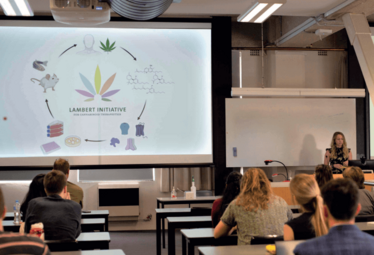
Where do you want to be at the end of the initial 10 years of funding?
The most important goal is the development of novel cannabinoid therapeutics. As well as carrying out clinical trials with CBD, THC, and various minor cannabinoids, we are working to develop novel medicines. Our model is to take phytocannabinoids, tweak their structure and bioavailability, and develop a huge library of molecules – over 700 and growing. Samuel Banister is our medical chemistry team leader, and he has an incredible ability to take a chemical structure and embellish it.
We’ve got a lot of information around the main targets that phytocannabinoids engage with in the body, and we use that to match cannabinoids with potential disease states. We then engage with a whole host of external phenotypic modeling labs to perform high-throughput screening of our library of cannabinoids for activity against a certain disease. For IP reasons, we can’t always shout about our findings, but we’re working away behind the scenes and very excited about the future.
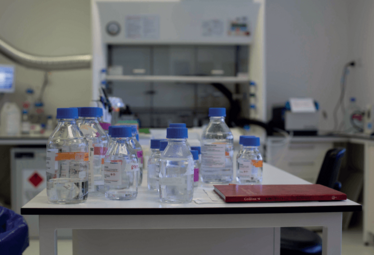
We also do a lot of public-facing work in advocacy and public policy. Getting a novel drug to market carries poor odds, so we feel it’s important we contribute in other ways too. We recently played an important role in making CBD available over the counter in Australia. We also do a lot of outreach to those Australians who are still using illicit cannabis products to self-medicate, which is a majority, as regulated products are still very expensive.
One study I’m really proud of (led by Anastasia Suraev) involved working with families who were medicating their epileptic children with black market cannabis oil (3); we tested their oil for cannabinoids and contaminants. It was helpful for the families to know what was in the products they were using, but it also gave us several interesting leads on minor phytocannabinoids; for example, CBC appears to have a strong anticonvulsant effect. The study shone a spotlight on the desperation of these families and contributed to pressure on the government to ease restrictions on cannabis products.
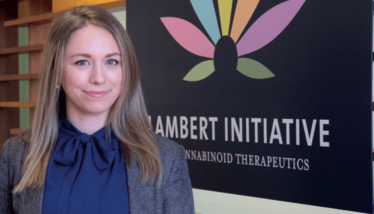
Elizabeth Cairns, Postdoctoral Researcher
Why I pursue cannabis/ cannabinoid research...
I became interested in the endocannabinoid system during my PhD, while under the supervision of Profs Melanie Kelly and William Baldridge at Dalhousie University. Prof Kelly is an expert in the ocular endocannabinoid system and targeting of this system for therapeutic use. I find it fascinating that even though the endocannabinoid system seems to be involved in almost every physiological process, there is still so much that we don’t know about it. My main interest is in how we might leverage the endocannabinoid system and cannabinoids to treat different disease states. I am fortunate to continue this work at the Lambert Initiative, within a team that has such a wide range of expertise.
What I’m working on...
In general, my work focuses on screening cannabinoids and endocannabinoid system modulators in various models of disease from both top-down (disease-focused) and bottom-up (target/cannabinoidfocused) approaches. In addition to examining the use of cannabinoids and endocannabinoid system modulators for the treatment of neurodegenerative diseases (both in vitro and in clinical studies), I also have several collaborative projects spanning across various disease areas, such as cancer and inflammatory bowel disease. Simultaneously, I am also involved in projects uncovering the pharmacological actions of phytocannabinoids beyond the classical cannabinoid receptors, in an attempt to explain some of the reported effects in humans and/or discover new possible therapeutic utility.
Where we’re heading...
Through our systematic and rigorous work, I hope that we can advance the understanding of the endocannabinoid system and the function of cannabinoids to establish where cannabinoid therapies could best be used. By establishing a sound knowledge base and through directed policy work, I hope we can help provide clear answers for patients and their healthcare practitioners – and continue to improve patient access to beneficial treatments.
What recent studies have been exciting?
I was also delighted with the paper (led by Tom Arkell) we put out in December 2020 in JAMA, which was the first ever study of whether CBD affects real-world driving (5). We showed conclusively that vaporized CBD had no impact on driving, whereas THC caused impairment for around 4 hours. We also recently carried out a meta-analysis (led by Danielle McCartney) of every study done on the duration of THC impairment (6). Studies like this won’t help us get a new drug to market but are incredibly useful for authorities, for politicians, and for patients. It’s one of the most asked questions about medical cannabis – how safe am I to drive? And now we’ll be able to give a pretty clear answer.
What is the best part of your job?
Probably the thing I enjoy most, in a social sense, is getting to know the brilliant people in our group and helping them succeed. I love it when people on the team do great work, regardless of whether I’m personally involved or not. If we provide an environment that enables the next generation of cannabinoid scientists, then I know I’m doing my job right.
The second thing that I really enjoy is what you might call the game of science – embarking on a research project and waiting to find out if the result will be what you expect or something totally different. If you’re very, very lucky, you’ll set out on a voyage to a particular destination and end up somewhere completely different and even better. I find that game so enjoyable, so compelling. And my current role lets me play on multiple levels – from chemistry to clinical trials to regulation. Though I’ll admit it can make for a few sleepless nights – especially when you’re planning your next moves or wondering how you’re going to get past an obstacle. Like most people in leadership positions, I sometimes wonder if I’m the right person for the job. But overall I love it!
What is your current focus?
One thing that I’m thinking a great deal about at the moment is strategic planning: how can we best use our cannabinoid science to best alleviate human suffering and how do we more rapidly translate from our high throughput cellular work into meaningful clinical outcomes? I also spend a lot of time thinking about how Lambert can continue into the future beyond our funding window that ends in mid-2025. Building this thing has been quite an achievement (and one that I can only take a small part of the credit for) and I hope it continues far beyond 2025. Whether that involves leveraging further philanthropy, spinoff companies, or grants is something I give a lot of thought to. After all, in many ways, it’s only just getting started.
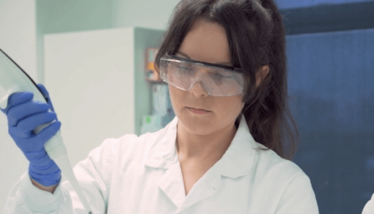
Anastasia Suraev, PhD candidate and Clinical Research Officer
Why I pursue cannabis/ cannabinoid research...
What drew me to cannabinoid research was my prior research into the impact that uncontrolled seizures can have on cognitive development, particularly when the seizures begin at a very young age. Epilepsy is more than just seizures. It can affect the child’s thinking skills, behavior, language, socia l interaction, and physical functioning. It speaks to the complex nature of this disorder and the need for new and better treatments, particularly for those who have tried everything and are out of options. This reality spurred my interest into the clinical applications of cannabinoids in treating multiple aspects of epilepsy and other chronic and refractory health conditions. I have been working on a range of clinical projects with the Lambert Initiative for Cannabinoid Therapeutics since 2016 – with a particular research focus on epilepsy (3) and sleep disorders (4).
What I’m working on...
I am currently working on the ‘CANSLEEP’ trial which is a randomized, placebo-controlled, crossover study that investigates the effects of CBD and THC on sleep and daytime function in patients with chronic insomnia. It is the first study of its kind to use a novel neuroimaging technology known as high-density electroencephalography (EEG) to comprehensively examine changes in brain activation during sleep and while awake in this population. We are also assessing next-day residual effects on cognition, alertness, and driving performance. This work will provide insights into how cannabinoids affect the brain during sleep and the next day in a manner that will hopefully help to inform policy, research priorities, and clinical decision-making.
Where I’m heading...
I aspire to become an internationally recognised expert in my field and conduct high-quality clinical research that will help to bring medicinal cannabis out of the dark and legitimise it as a viable treatment option.
What’s next?
Australia has now approved over the counter CBD at doses up to 150 milligrams per day. So one of the clinical trials we’re doing this year is looking at whether low-dose CBD does anything useful. Currently, there is very little evidence on whether a 25 or 50 milligram CBD capsule has any impact on health. No one has done those clinical trials. So we’re doing a trial – affectionately known as the “grumpy” trial – in which middle aged people with insomnia take CBD or placebo for 12 weeks. The primary outcome is insomnia, but we’ll also look at mood and anxiety, cognitive function, metabolic function, even susceptibility to minor illnesses. I’ve got my own vision of what the outcome is going to be. But perhaps nature has got other ideas!
Have you tried CBD yourself?
I use it for one thing: tennis. I take a CBD capsule before I play tennis because I feel that it just makes me less anxious about the outcome and therefore able to play more confidently. It may well just be a placebo effect, but then the placebo effect is a very powerful thing…
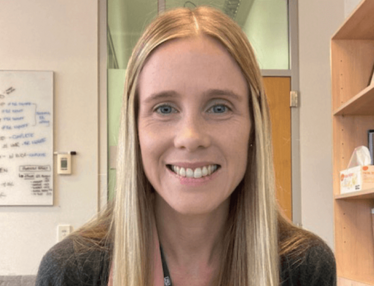
Danielle McCartney, Clinical Research Fellow
Why I pursue cannabis/ cannabinoid research...
I first became involved in cannabinoid research when the Lambert Initiative offered me a position studying the effects of cannabinoids on driving performance. Before this, most of my research had focused on the effects of alcohol consumption – and I was excited about the prospect of expanding into a new field. One of the things I’ve enjoyed most about this field is the scope that exists to bring about positive change; for example, to improve legislative approaches to identif y ing and prosecuting cannabis-impaired driving.
What I’m working on...
Much of my research focuses on understanding the manner in which cannabinoids affect driving performance. Right now, my colleagues and I are particularly interested in the effects of prescribed medicinal cannabis. Patients using prescribed THC-containing medicinal cannabis products are not permitted to drive and face potentially severe penalties if caught operating a motor vehicle with “legal THC” in their system. And yet it is unclear whether these individuals are actually impaired. In fact, we suspect they may develop tolerance to THC’s effects (6) and that the alleviation of medical conditions, such as chronic pain , PTSD, depression, and insomnia could even assist driving.
I have also been involved in other projects investigating CBD’s effects within the context of sport and exercise. Indeed, my earlier PhD research looked at different nutritional strategies to enhance post-exercise (7) recovery and athletic performance. Some of our recent data suggest that CBD is unlikely to impair (and could, in fact, aid) exercise performance. Knowing this, we are planning to investigate its utility in the treatment of sports concussion. Despite the high prevalence and harmful effects of sports concussion, there is limited evidence to support current rehabilitation strategies.
Where we’re heading...
I hope that our research can help improve legislative approaches to identifying and prosecuting cannabis-impaired driving. I am also excited to begin our research in the field of sports concussion and hope that this generates some interesting results!
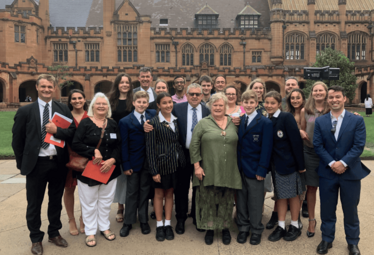
The Lambert family with members of the Lambert Initiative
- LL Anderson et al., “Cannabichromene, related phytocannabinoids, and 5-Fluoro-cannabichromene have anticonvulsant properties in a mouse model of Dravet syndrome,” ACS Chem Neurosci, 12, 330 (2021). PMID: 33395525.
- LL Anderson et al., “Pharmacokinetics of phytocannabinoid acids and anticonvulsant effect of cannabidiolic acid in a mouse model of Dravet syndrome,” J Nat Prod, 82, 3047 (2019). PMID: 31686510.
- A Suraev et al., “Composition and use of cannabis extracts for childhood epilepsy in the Australian Community,” Sci Rep, 8, 28127 (2018). PMID: 29977078.
- AS Suraev et al., “Cannabinoid therapies in the management of sleep disorders: a systematic review of preclinical and clinical studies,” Sleep Med Rev, 53, 101339 (2020). PMID: 32603954.
- TR Arkell et al., “Effect of cannabidiol and delta-9-tetrahydrocannabinol on driving performance: a randomized clinical trial,” JAMA 324, 2177 (2020). PMID: 33258890.
- D McCartney, TR Arkell and IS McGregor, “Determining the magnitude and duration of acute Δ(9)-tetrahydrocannabinol (Δ(9)-THC)-induced driving and cognitive impairment: A systematic and meta-analytic review,” Neurosci Biobehav Rev, 126, 175 (2021). PMID: 33497784.
- D McCartney et al., “Cannabidiol and sports performance: a narrative review of relevant evidence and recommendations for future research,” Sports Med Open, 6:27 (2020). PMID: 32632671.

Rich Whitworth completed his studies in medical biochemistry at the University of Leicester, UK, in 1998. To cut a long story short, he escaped to Tokyo to spend five years working for the largest English language publisher in Japan. “Carving out a career in the megalopolis that is Tokyo changed my outlook forever. When seeing life through such a kaleidoscopic lens, it's hard not to get truly caught up in the moment.” On returning to the UK, after a few false starts with grey, corporate publishers, Rich was snapped up by Texere Publishing, where he spearheaded the editorial development of The Analytical Scientist. “I feel honored to be part of the close-knit team that forged The Analytical Scientist – we've created a very fresh and forward-thinking publication.” Rich is now Content Director of Texere Publishing, the company behind The Analytical Scientist.












